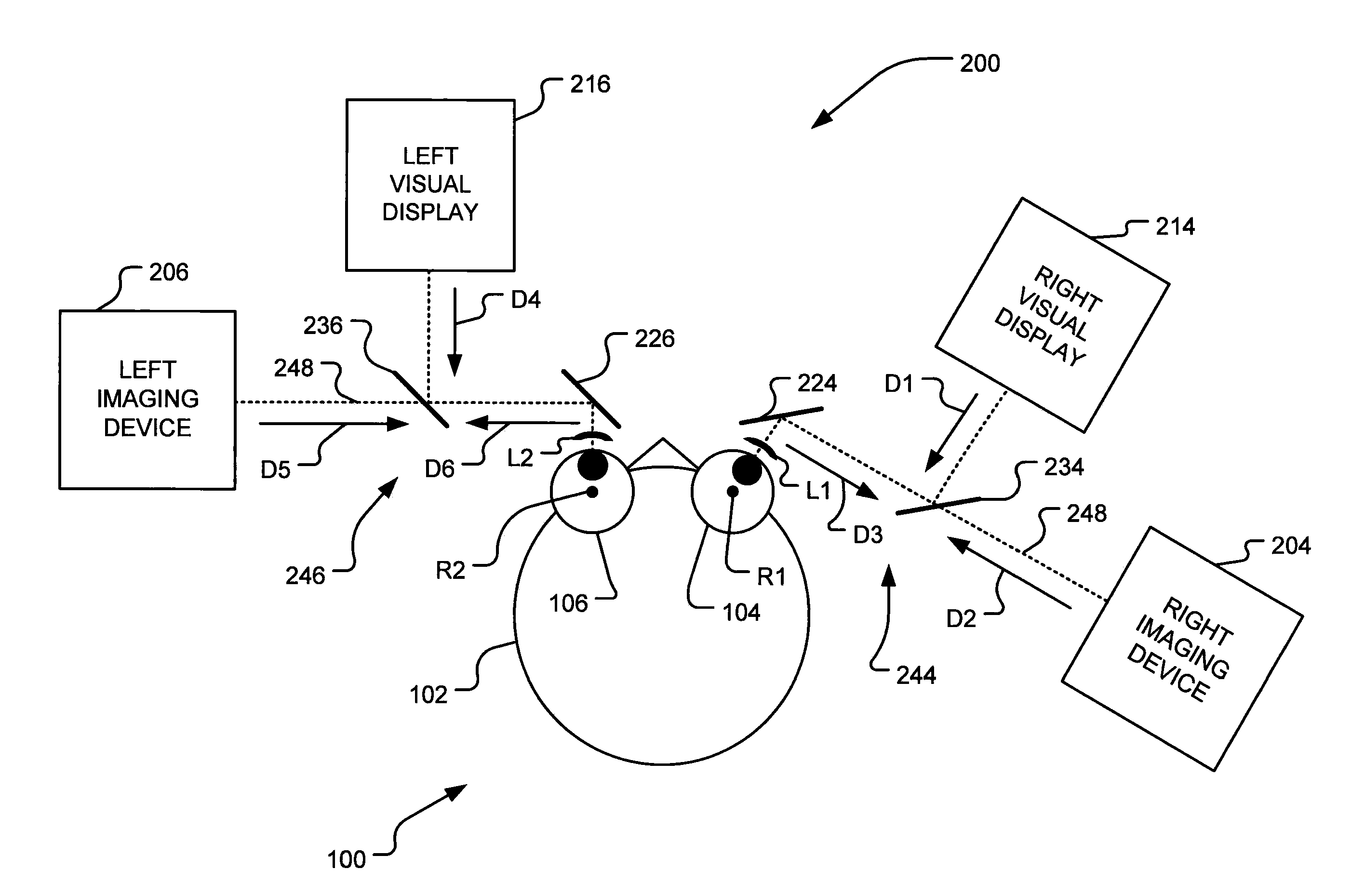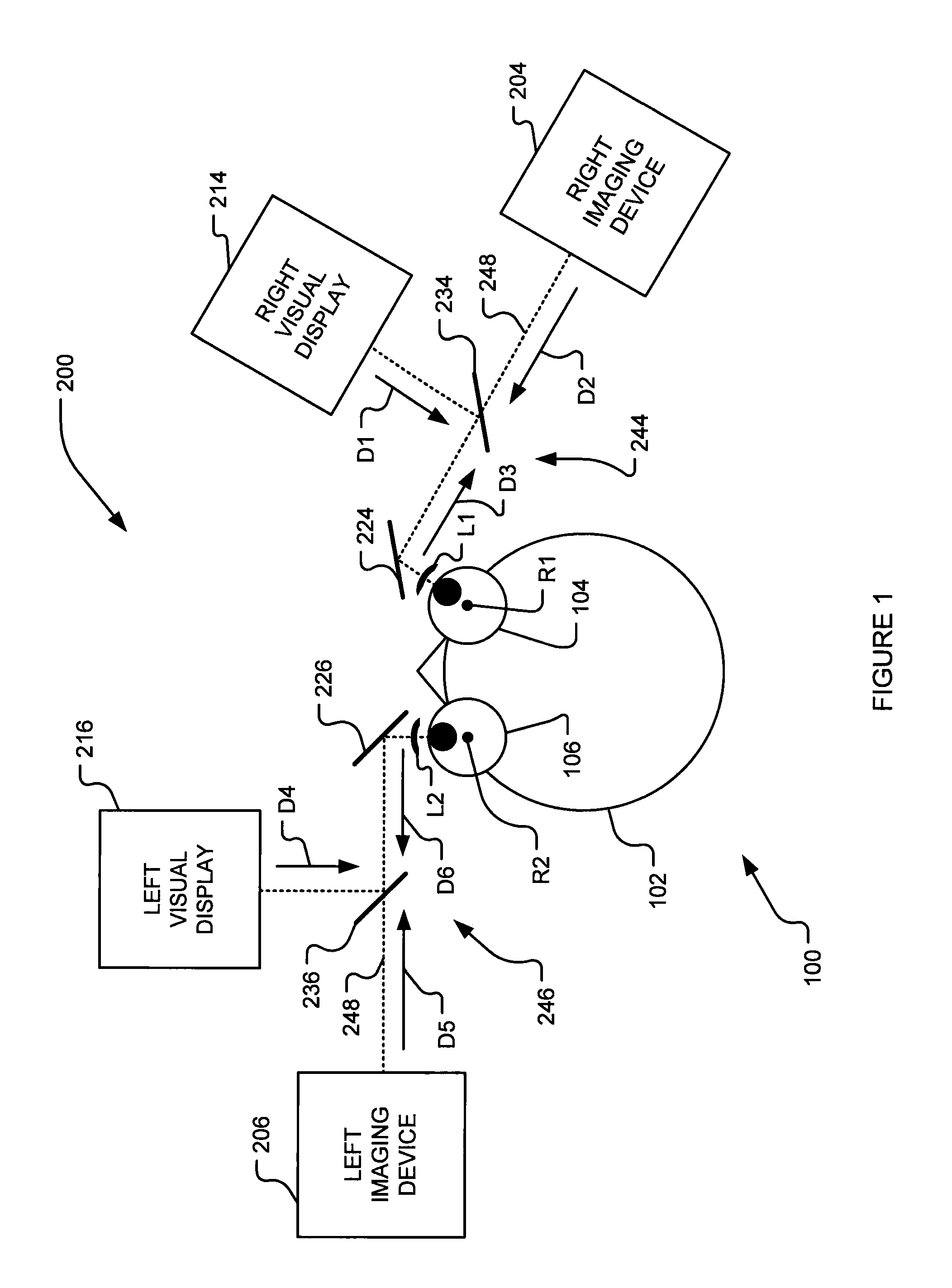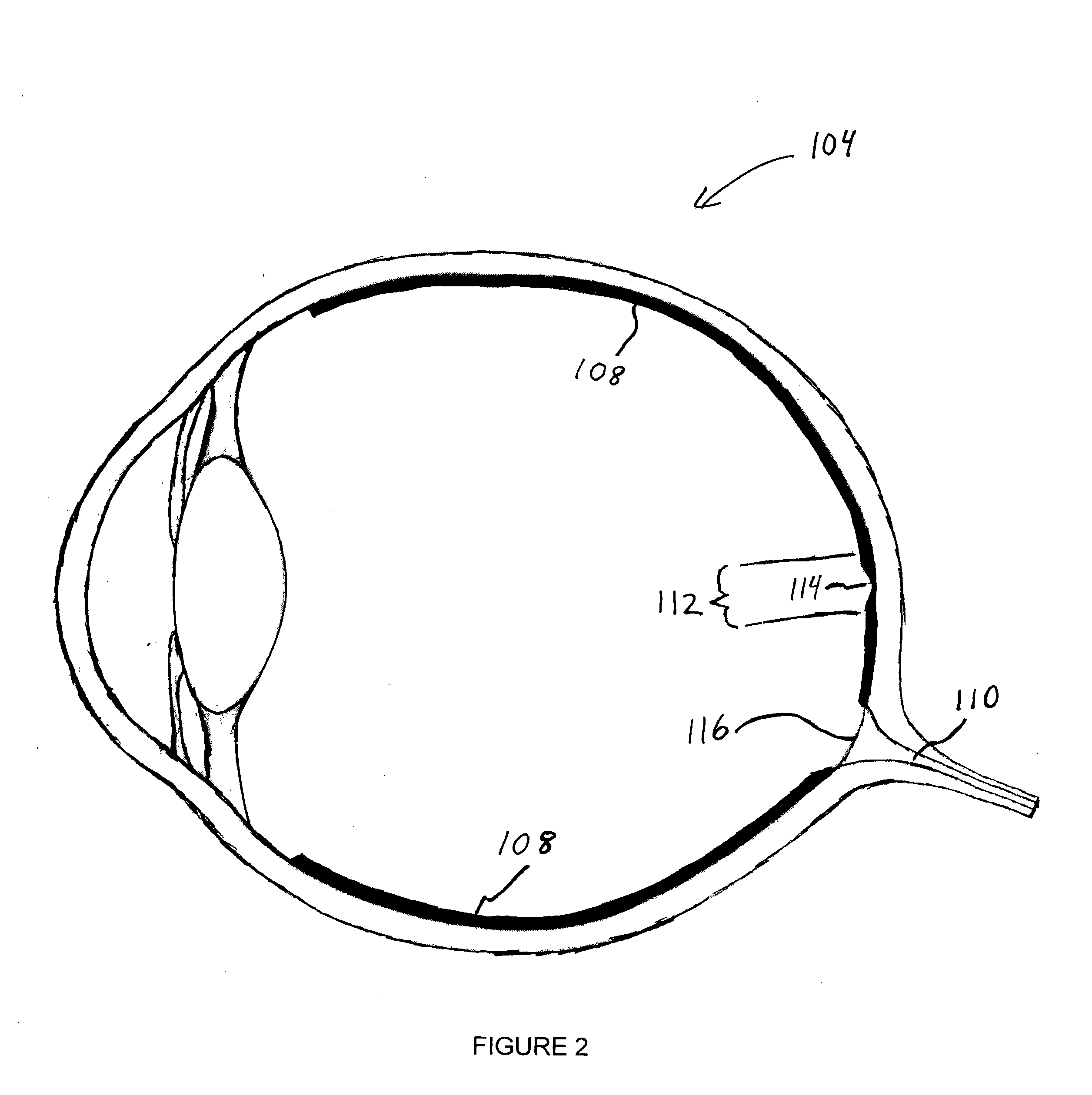Method and system for treating binocular anomalies
a binocular anomaly and treatment method technology, applied in the field of binocular anomalies treatment methods and devices, can solve problems such as double vision (diplopia, visual confusion, uncoordinated eye movements,
- Summary
- Abstract
- Description
- Claims
- Application Information
AI Technical Summary
Problems solved by technology
Method used
Image
Examples
Embodiment Construction
[0017]FIG. 1 illustrates a patient 100 having a head 102 with a right eye 104, and a left eye 106. In the example provided in FIG. 1, the patient's right eye 104 is turned outwardly (toward the right) when the left eye 106 is looking straight ahead. Thus, the patient 100 illustrated has exotropia (an eye that deviates outwardly) and is unable to achieve reliable binocular fixation.
[0018]FIG. 2 illustrates some of the internal structures of the right eye 104. The left eye 106 has substantially identical structures to those of the right eye 104. Therefore, for ease of illustration, only the internal structures of the right eye 104 have been illustrated. As is apparent to those of ordinary skill in the art, the right eye includes a retina 108 connected to an optic nerve 110. The retina 108 includes landmarks, such as the macula 112, the fovea 114 (or most central part of the macula), the optic nerve head 116, a specific pattern of blood vessels (not shown), and the like, that may be vi...
PUM
 Login to View More
Login to View More Abstract
Description
Claims
Application Information
 Login to View More
Login to View More - R&D
- Intellectual Property
- Life Sciences
- Materials
- Tech Scout
- Unparalleled Data Quality
- Higher Quality Content
- 60% Fewer Hallucinations
Browse by: Latest US Patents, China's latest patents, Technical Efficacy Thesaurus, Application Domain, Technology Topic, Popular Technical Reports.
© 2025 PatSnap. All rights reserved.Legal|Privacy policy|Modern Slavery Act Transparency Statement|Sitemap|About US| Contact US: help@patsnap.com



